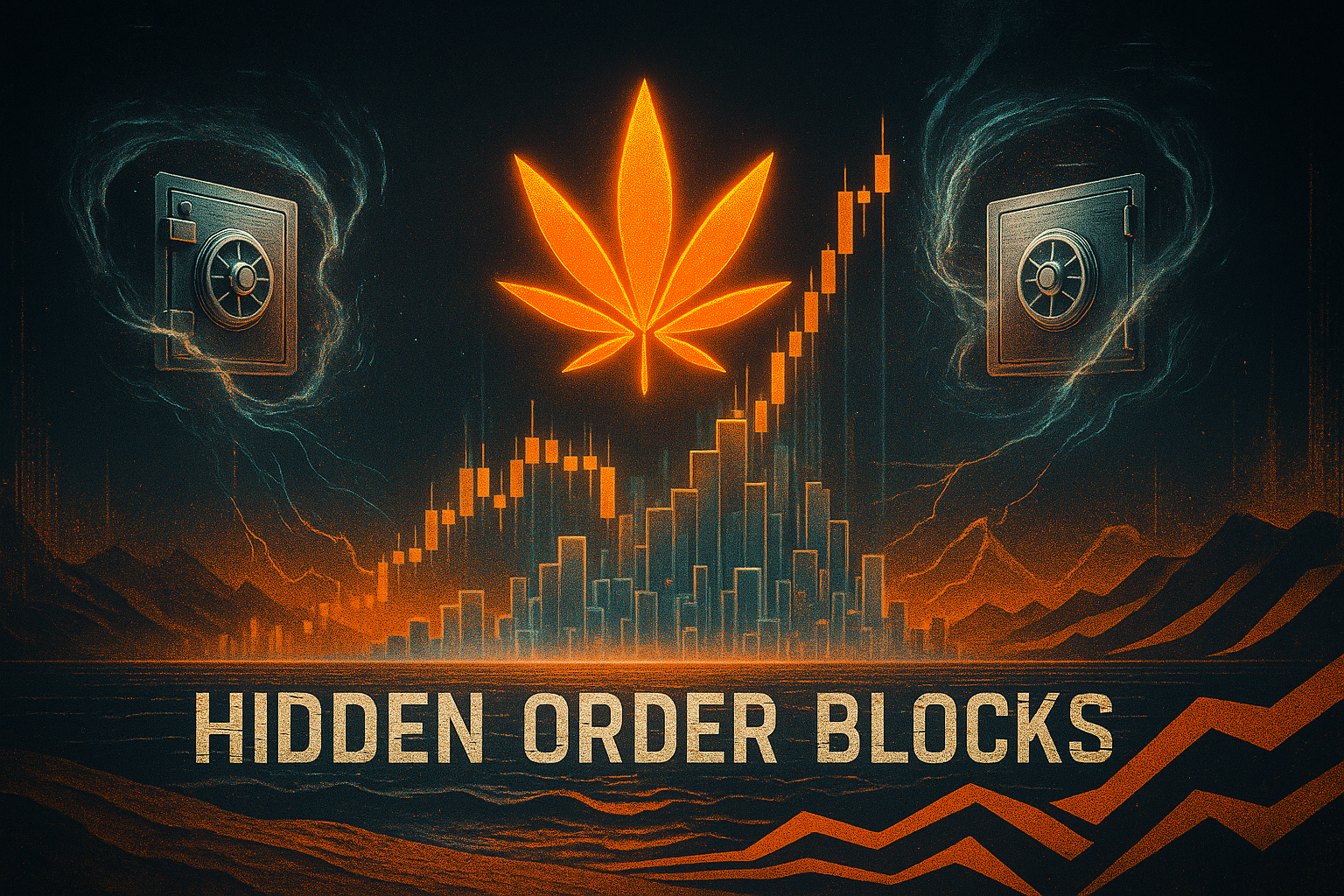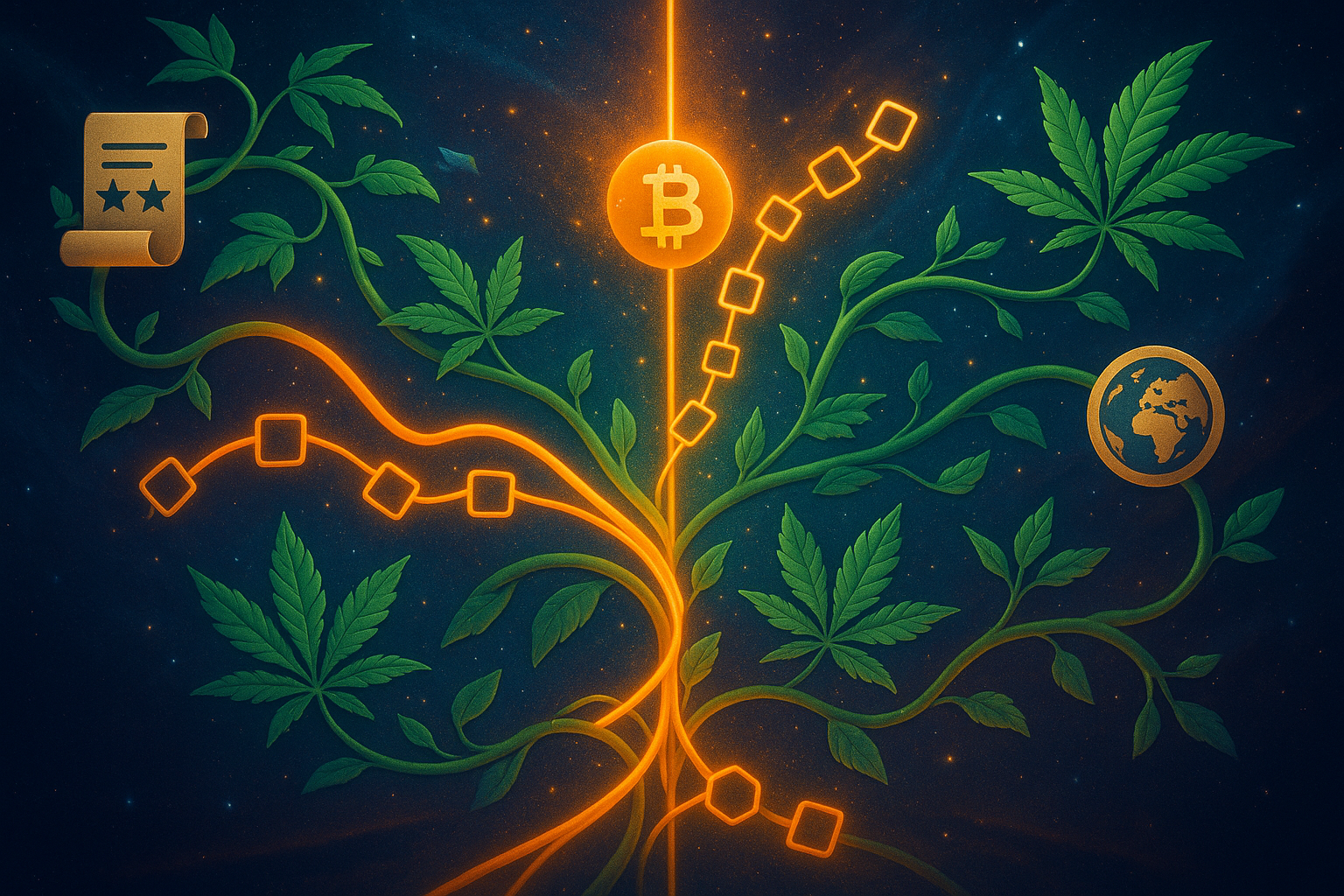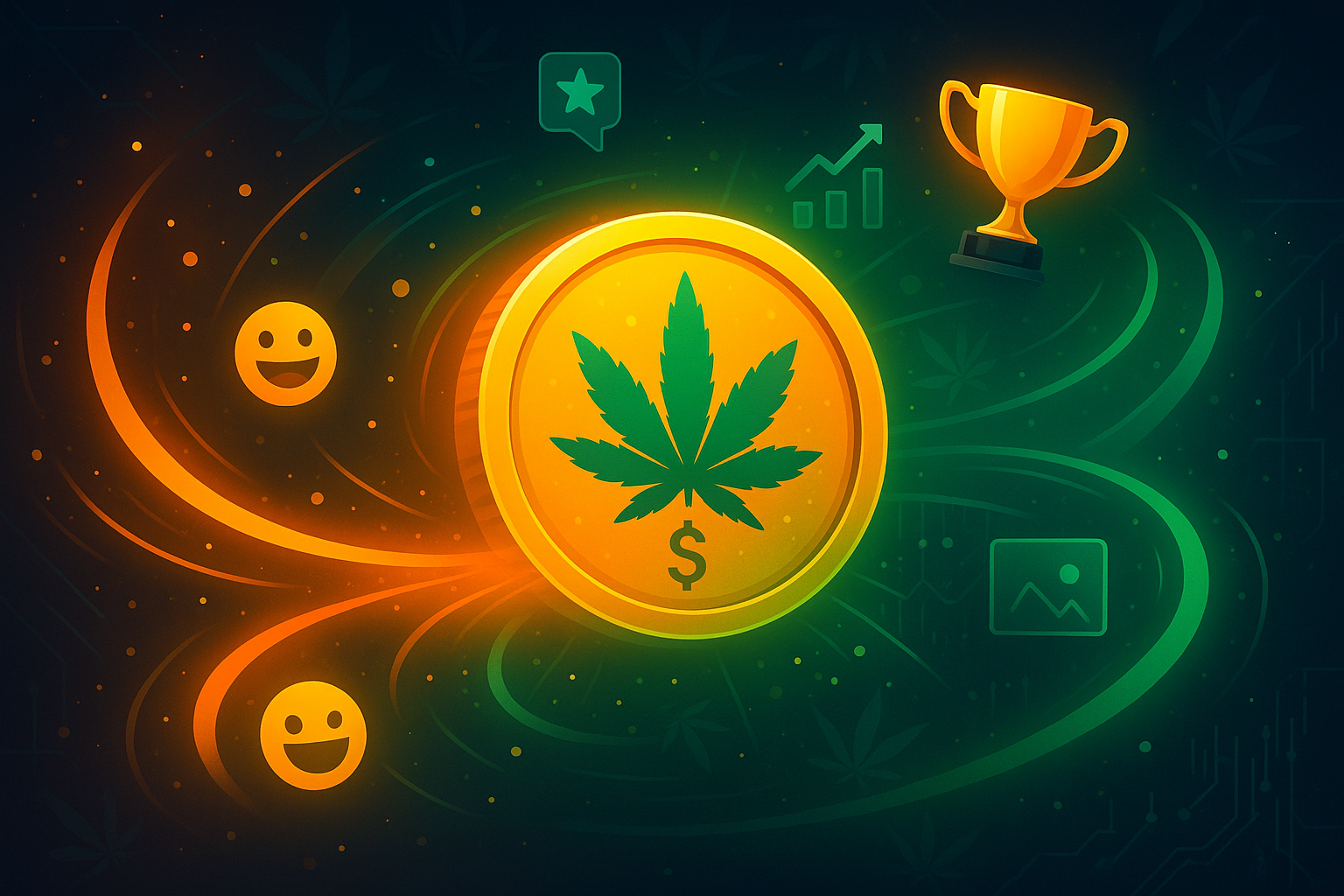What Is Blockchain?
The Technology Behind WeedCoin and the Decentralized Future of Cannabis
You’ve probably heard the word “blockchain” tossed around anytime crypto comes up — but what exactly is it? And why does it matter to the cannabis community? Whether you're a casual consumer or a dispensary operator exploring WeedCoin, understanding blockchain is key to unlocking safe, cashless, and transparent transactions. In this post, we’ll break it down without the jargon, show how it powers crypto like WeedCoin, and explain how it could transform the way cannabis is tracked, sold, and shared.
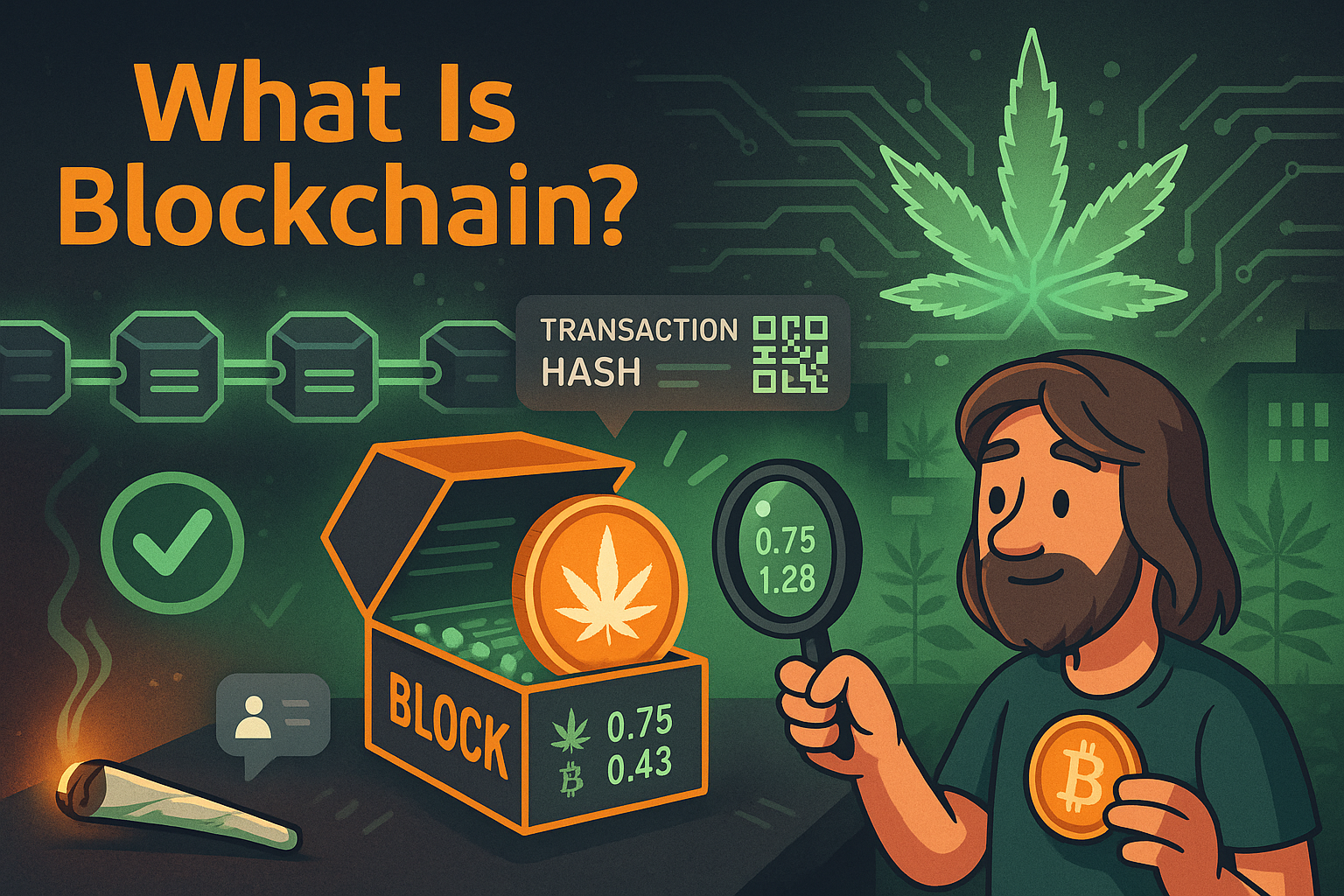
Blockchain in Simple Terms
Think of blockchain as a digital notebook — one that’s shared across thousands of computers and can’t be changed once something’s written in it. Instead of a single company or person controlling it, everyone in the network has a copy, and they all work together to verify new entries (aka transactions).
Each page in that notebook is called a block. Each block holds a set of transactions and links to the previous one — forming a chain. That’s where the name “blockchain” comes from.
Because of this structure:
- Transactions are permanent
- The system is transparent and trustless
- No one can fake or undo payments
This is what gives cryptocurrency — and WeedCoin — its power and security.
Why Blockchain Matters for Cannabis
Cannabis businesses face challenges in tracking products, verifying payments, and staying compliant with shifting laws. Blockchain can help solve all of that.
Here's how:
- Product Traceability: Track a strain from seed to sale on a transparent ledger
- Secure Payments: WeedCoin uses blockchain to record every transaction in real time
- Regulatory Proof: Dispensaries can show a full record of purchases without storing private customer data
- Global Access: Cannabis companies can operate across borders with fewer banking limitations
It’s not just about money — blockchain is a new way to build trust and accountability in the cannabis economy.
How a Blockchain Works
Let’s say you’re buying a pre-roll using WeedCoin. Here’s what happens behind the scenes:
- You scan a QR code and send a transaction from your wallet
- The transaction is broadcast to the WeedCoin network
- Computers (called validators) check the transaction and approve it
- Once confirmed, it gets added to a block
- That block is linked to the chain and shared across the entire network
The transaction can’t be changed or deleted. That’s permanent proof of payment — ideal for cannabis businesses needing compliance, and for customers who want peace of mind.
Decentralization: Why It’s a Big Deal
In traditional systems, a bank or payment provider is the middleman. They hold your money, decide what’s allowed, and can reverse or block your transactions.
In blockchain, nobody owns the network — and nobody can tamper with your transactions. You have full control of your money, and everything is visible, secure, and permanent.
This kind of trustless transparency is why WeedCoin is perfect for an industry like cannabis, where legacy systems have failed time and time again.
Key Takeaways
- Blockchain is a digital ledger that’s decentralized and tamper-proof
- Each transaction is stored in a block and added to a chain
- WeedCoin uses blockchain to enable fast, secure, and compliant payments
- Cannabis businesses can track products, prove legitimacy, and reduce risk
- Decentralized systems remove middlemen and empower users
Keep Learning with WeedCoin
You now understand the foundation of how WeedCoin — and most of crypto — actually works. Want to keep going? Explore How Blockchain Works in Detail, or swing by the MediWeed Hub to see how tech and medical marijuana are combining to reshape cannabis culture.
